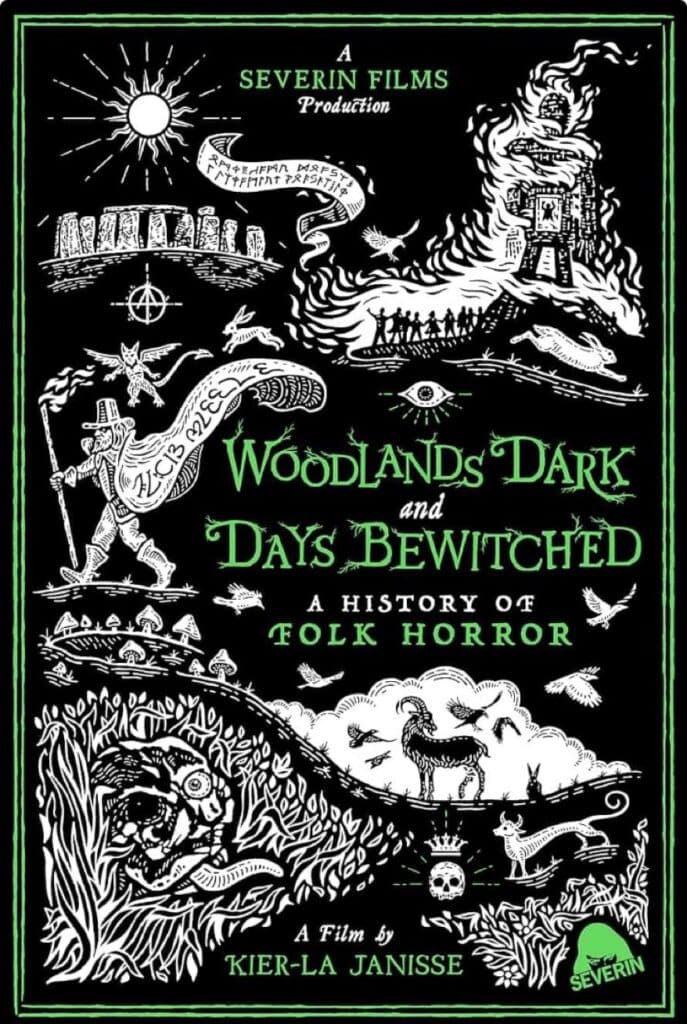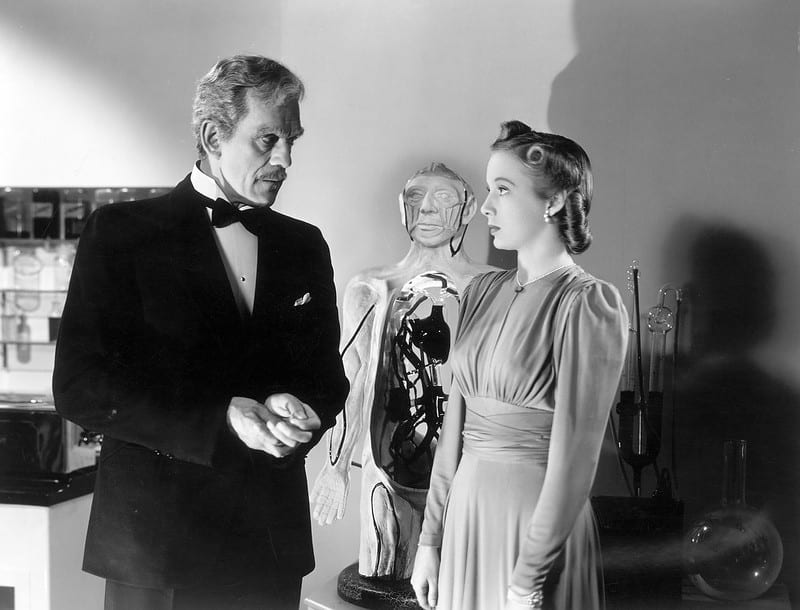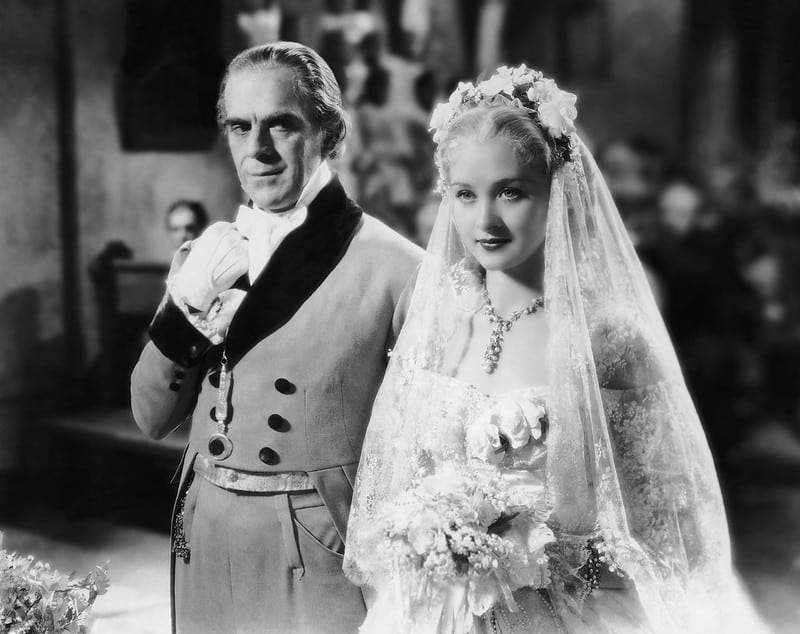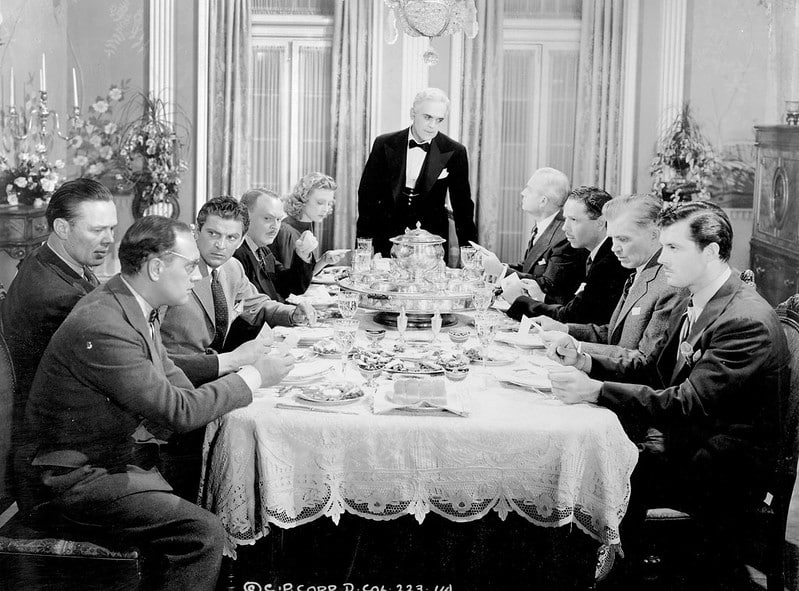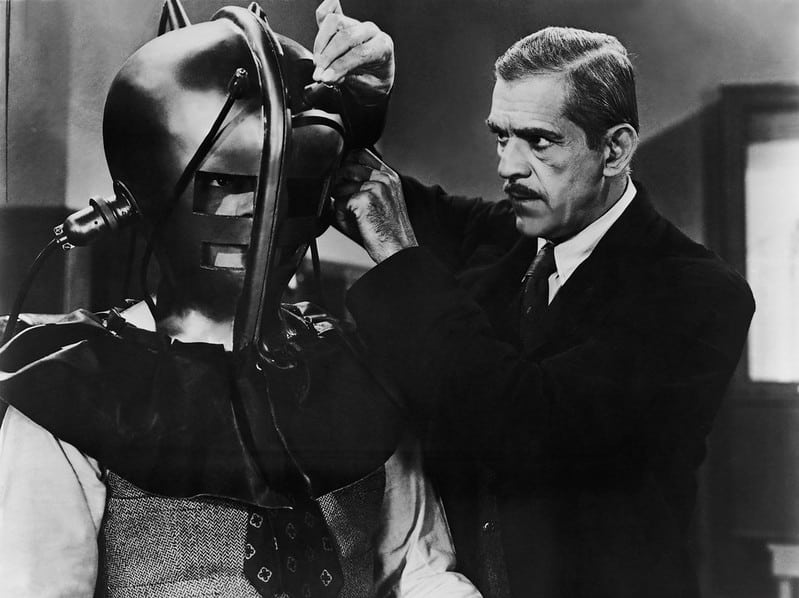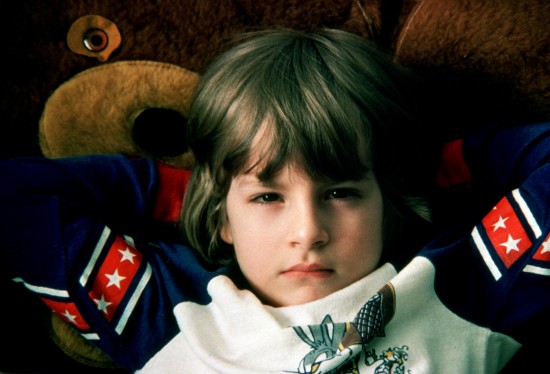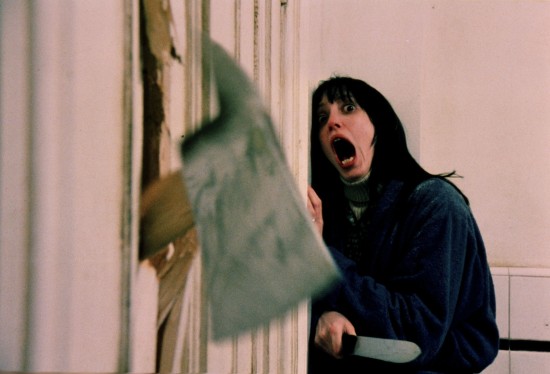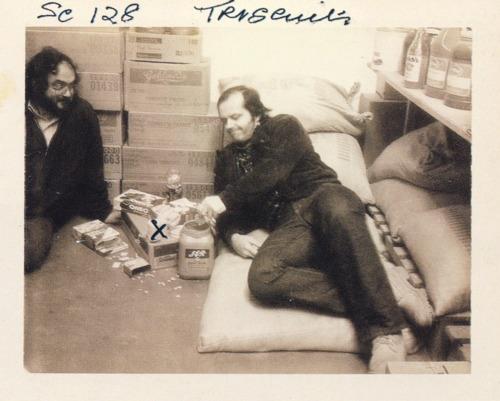Scottish actor Gordon Kennedy’s appearances have been somewhat few and far between in cinema, his latest endeavour on the silver screen has been something of a critical hit amongst the horror community, with a starring role in Elliot Goldner’s The Borderlands. Kennedy discusses the differences in working in film compared to television, while also letting us in on the fresh challenges that come with the found footage genre. He also explains why his comedic background was beneficial to this piece, and whether or not he believes in the supernatural himself…
Q:So what attracted you to the project?
Well they offered me the job, is my stock reply to that. It’s like nothing I’ve ever done before and I liked the idea of staring in a film, I don’t get offers for big Hollywood movies! I’m not a massive slasher horror fan, but films like The Evil Dead, funny, disgusting horror films, I love that. The humourless stuff that followed that wasn’t of much interest to me. The story in this is interesting, that whole thing of doing a horror film but about the people who are rubbishing, you’re starting from quite a cynical standpoint. I liked that idea.
Q:Your cynical character almost represents the viewer in that regard…
Completely. What I liked about him, and what we pushed quite a lot, was this idea of him losing his faith. The tortured holy man who is beginning to question what he’s sacrificed his life for, which is why he’s very open to the idea of miracles. We talked about that a lot during the film of it.
Q:You mentioned before your joy in doing a film, as most of your previous work has been on television. These days the line between the two mediums is so blurred – did this feel different though, like a movie?
Yeah it felt very different, especially in the bank balance! First of all it was a genuinely low-budget, independent British film, and those tend to be populated by very young, very enthusiastic, incredibly talented people, which is fantastic. I’d never seen that. The world of television tends to be populated by those who have done it for a long time. These guys are girls are coming out of film school. It was a real learning experience to see how these people work. They’ve only grown up in the digital age, they’re wondering around with SD cards all the time, that’s it. It’s an obvious thing, but it belies a huge difference in approach, but incredibly knowledgable about film and characters. They’re big fans of filmmaking right the way through, they can pick out their favourites from any genre and any age – and that’s just really interesting.
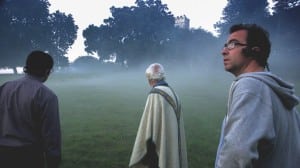
Q:So despite being in the industry a lot longer than Elliot – you still learnt a lot from him as a director?
Completely, I learnt a lot. But not just from Elliot, but all the crew. The D.O.P. Eben Bolter too, who is a really clever guy. Obviously with a found footage film, when one of the cameras is on your ear you get a fairly intimate relationship with the cameraman. I felt like I’d almost been unfaithful by the end of some days. I felt dirty, I had to go and have a shower. As did Eben. Again, that was learning for me because I hadn’t done found footage. I’m not sure if Elliot or Eben had either, but they’d really worked out how they were going to do it. It just brilliant and so interesting to work in that way.
Q:Did shooting a found footage movie bring about some new challenges you hadn’t faced before as an actor?
It’s a completely different environment. You have these head cams so it becomes really important to look at each other, if you look up or down you won’t see anyone. Things like that, there’s a lot more collaboration between camera crews, and lighting and props and actors and director than there might be otherwise. All these practical things are really interesting, but honestly it’s quite liberating. You don’t have to relight, you don’t stop and move the set around – you just film it and keep going, and you can try lots of different things. That was great fun, you really felt like you were part of the process, whereas there’s a danger in bigger films where you feel more like a mannequin. Ewan McGregor was very funny when he did Star Wars, he was so disappointed with the process. He said, ‘I spent six months staring at a green screen, I have no idea what my enemies look like. You’ll know before me’. Whereas this isn’t like that at all. It’s all real, and you’re constantly working with the whole team, and I really like that. I’ve stared in comedy and stuff like that, it’s a team game, not individual.
Q:Found footage films encourage a more naturalistic approach to acting, and provoke improvisation. Did that serve you well as an actor?
Yeah it really did. First of all, Rob [Hill] and I just got on, right from the off. It was one of those weird things, we just had a laugh, we trusted each other. It meant that we could push things, he really could say outrageous stuff and know I would come back, and that helped with us getting to know the characters, as well as each other, and it helped the film. The first 20 minutes could be dull exposition, but we worked on making the characters believable, and you like them and like being around them. Rob will be saying something stupid or I’ll be being grumpy and it works. It also means that when the characters go into jeopardy, the audience are taken along on an emotional level as well. That’s always good. The reaction at screenings is fantastic, I love it, because people are genuinely going ‘oh no!’ and that’s good, because you don’t do that in Saw. You just go ‘oh he’s got his leg cut off, fuck it, I don’t know him, I don’t care’.
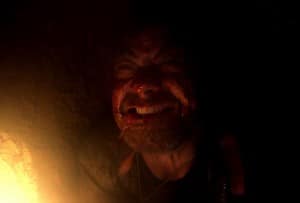
Q:Improvisation serves the horror and comedy genres best I think, and this strikes a nice balance between the two. You’ve got a background in comedy, so I imagine that was pretty beneficial?
Yes it was. Rob is the funny man, but that’s good, I knew I could relax and I knew when to come in, when to shut up and let him get the laughs. Also, horror is very similar to comedy, in a sense that you have an audience reaction. It’s really black and white, and very simply whether you’ve got it right or wrong. In comedy the audience laugh, in horror they scream, and if they don’t scream at that moment you want them to, you’ve done something wrong, it’s not their fault. Same if people don’t get a joke, you’ve written it wrong or delivered it wrong. Those things are very similar, the timing of how you do things. With horror you’ve got the benefit of sound. We don’t have massive CGI, special effects budgets, so sound is so important.
Q:As someone who knows the project inside out, are you still able to get immersed in the film when watching it back? Do you feel tense?
You do, but it’s more from feeling it around the audience. When I’m watching something I’m in, it’s much more to do with the atmosphere, you can feel when the audience are absolutely there, and obviously you get the physical response, when the audience jump up in their seats. But I don’t get completely immersed in it, because I can’t see The Borderlands without seeing me in it. Most of the time I just sit there thinking, ‘Jesus, why did you do that?’ so I tend to concentrate more on the audience – that’s the important thing.
Q:Do you ever get used to seeing yourself on the big screen? Do you scrutinise over it a lot?
Yeah you tend to look at stuff, but I’m terrible. My wife constantly shouts at me when we’re watching something on television, and I’m being cynical. That’s the devil’s pay you have when involved in the business, you can’t look at something as a punter. That’s the sign of a good show – when I watch something completely as a punter. Like Line of Duty recently, I absolutely loved that, it’s fantastic. But with myself, yeah I’m not very good at watching, ‘who’s that handsome hunk in the background?’ is not what I do. I’m not sure many actors do, contrary to popular opinion – I think most hide their head in their hands.
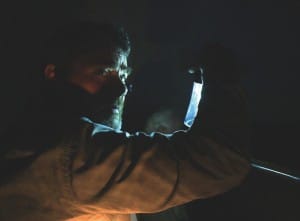
Q:So do you think this film has an appeal to films fans in general, outside of horror aficionados?
Yeah completely. When this first went out on the festival circuit, for the horror reviewers, the opening lines to so many of their reviews were, ‘this is a found footage film, but…’. We argued about this when making the film, I think it’s a genre, I think there’s enough examples of it being used, and it’s a way to tell a story, that’s all. Perhaps it’s more a style than a genre, it’s a way of telling stories, like shooting a film in black and white. So a lot of people were a bit tired of it because of the success of things like Paranormal Activity, you get Paranormal Activity Four and pay just think, I’ve had enough of this. But in this instance it really works, it’s embedded in the story and there’s a really good plot reason why we’re doing it, so you don’t worry about it. As soon as you’ve done that, and set it up properly, nobody worries about it and it’s fine. That was important, and a good example of how to do something like this. If there’s a good, competent reason why you’re doing it in a certain way, the audience relax
Q: So you think it’s important the audience go in without any preconceptions of this genre?
Yeah absolutely. It’s a horror film and it’s low-budget, but it’s really nicely scripted and there’s some good themes, leading, inevitably, to a really scary end. You’re on a real journey. People who don’t like horror films, well they’ve been ambushed a bit, so they think they’re watching Final Destination or something. This is different, this obeys the laws of film, gives you characters, you like them, and you go on a journey with them.
Was it a challenge for you to find a strand of realism in the role and story, when dressed up in such supernatural surroundings?
No, because the crux of his doubt and his anguish, is whether you’re prepared to take this leap of faith or not, so it’s about that. Which is great, because I could have that inner turmoil, externally. That added a bit to the character, that’s why it’s interesting.
Q:Do you believe in the supernatural yourself?
No. No. I don’t. I was talking to someone the other day, and there was one time we were filming in a haunted house and the camera went from colour to black and white in this haunted room, and everybody was convinced that was a ghost.
Q: You were filming in derelict churches at the dead of night – it must have been quite eerie at times to shoot?
Yeah, and that really helped. Definitely, there were a couple of times when I go back to church a couple of times on my own and when we’re filming that, because it’s wide shots, supposedly the CCTV cameras from the church, nobody could be in there, so it’s 2am, it’s dark, it’s a derelict church and I’m in there on my own, so you can use whatever you can to make the realism a bit more real, and it certainly was a little spooky in there. It definitely helped.
Q: So are a big fan of horror as a genre? What state do you think it’s in at present?
What’s really interesting, is that British independent films and the horror genre, and inextricably linked, because there’s a massive tradition of British horror films, from pre-Hammer to now, with people like Ben Wheatley. It’s great going round to these festivals like FrightFest, where a lot of British filmmakers are cutting their teeth by making a movie in the horror genre, because they know they’re going to get a lot of exposure and it’s good fun. If done well, it can really show your skills off as a filmmaker. So I think it’s pretty good, and every now and again people reinvent the wheel. Like Paranormal Activity just moved found footage to a different level, deliberately setting it in the one place where you think you’re most secure – a bedroom. A sensational thing to pull off, and to pull off like they did. Cloverfield too, that took found footage into a massive, special effects movie and that was really interesting. All of that stuff is great because it broadens the field.
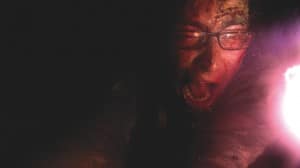
Q:Not to take anything away from The Borderlands, but have you been surprised at the level of acclaim it’s been receiving so far? Across the world.
Yes, yes I have. It’s been a real positive surprise to me. Partly it’s because it’s an entirely new field so I have no critical compass here. Obviously I’m in it and I want it to be really good and I know how hard everyone worked – so I’m the worst person in the world to look at it in perspective because obviously I’m going to say it’s great. But it’s been really interesting how people, and not particularly horror fans, have loved it. That means there’s something in the script, in the acting and in the characters is obviously working, otherwise that wouldn’t have happened. People my generation are not necessarily horror fans, but they seem to like it and that’s been a heartening process to go through, and it makes me very proud of it and of all the people who worked so hard to make it as good as it is. That’s been fantastic. It’s also really interesting, because there’s a huge amount of positivity in this area I never expected. Because you generally see film critics slagging off Hollywood blockbusters, you feel there’s a spikiness about film criticism and the film world. But what’s been interesting is watching the warmth of other filmmakers and critics to this film, who are saying, ‘this is a low budget film that you should see.’ Empire magazine put it in their top 20 films you should have seen but probably didn’t watch in 2013, and that’s been a real shock to me, but a brilliant one. It shows there’s a proud tradition of filmmaking in this country, and people in charge of bringing that, like you, the critics, are very mindful of the idea that British film is very important, so when you see something worthy of merit, you are looking at something and saying, ‘this is very good’. Not, ‘it hasn’t got Ewan McGregor in it, so fuck off’. Stefan Pape
THE BORDERLANDS IS ON GENERAL RELEASE FROM 28 MARCH 2014
[youtube id=”8j1aimF90Dk?t=7s” width=”600″ height=”350″]

